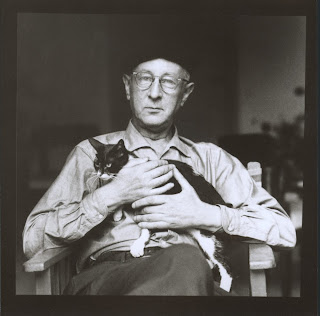Chausson: Piece for cello & piano (1897)
Standing: Mme Chausson, Ernest Chausson, and Raymond Bonheur.
Seated on the ground: Claude Debussy
In 1893, Claude Debussy wrote to Ernest Chausson,
Music really ought to have been an
hermetical science, enshrined in texts so hard and laborious to decipher as to
discourage the herd of people who treat it as casually as they do a
handkerchief! I'd go further and, instead of spreading music among the
populace, I propose the foundation of a 'Society of Musical Esotericism'.
His words project a sense of the place and times, ca.
1871-1914, that we call 'Belle Époque Paris', the focus in Europe for the
symbolist movement in poetry, and impressionism in painting and music.
Putting to one side the artist's disdain for an
uncomprehending audience (imagined or real), it's difficult now to understand
just why the music of this era, which audiences today rarely consider
'difficult', was labeled 'decadent' and worse. A major justification was the
often cited violations of the holy trinity of Western music – melody, harmony and rhythm. One critic wrote
about a new work that it '[abolishes] rhythm, melody and tonality from music
and thus [leaves] nothing but atmosphere.' But critics' focus on these
compositional elements was not completely off the mark. If that critic, instead
of writing 'abolishes' had written 'reimagines
rhythm, melody and tonality' he would have been on to something. A case in
point is the 1897 Piece for cello and
piano by Ernest Chausson.
Ernest Chausson (1855–1899)
Piéce, Op. 39
Javier Albarés Alberca, cello, Javier Estebarán Crespo, piano
El Jardin de Belagua, 2010
The piece opens under the time signature 54
(five quarter-notes in every bar). This is uncommon in Western music of the
17th-19th centuries where the numerator (number of beats in a bar) is nearly
always divisible by 2 or 3 (24, 34,
68, 44, etc.), but it's not unheard
of. The second movement of Tchaikovsky's 6th Symphony is written in 54.
The way Tchaikovsky handles this is by splitting the 5 into 2+3 beats in every
bar, so the effect is a repeating accent pattern 1-2/
3-4-5 / 1-2/
3-4-5 / etc. The overall effect is a
slightly off-kilter waltz. In his piece Chausson splits 54
the same way, but there is no suggestion of a waltz. For one thing, Chausson's
tempo is much slower, and this leaves room for him to 'play' within and across
the bar lines. Often the phrasing of the melodic line subtly splits the bar
differently, so one part in the piano might express the 2+3 division while the
cello phrases its melodic line to split the bar evenly 2-1/2
+ 2-1/2. Things get even more complex about half way
through the piece when the time signature switches to 74.
The overall effect of contrasting meters creates an asymmetry that suggests a
poem in free verse.
By now our Belle Époque critic is tearing his hair out,
thinking up new pejoratives while trying to find the beat. Fortunately,
audiences today have come to learn that to enjoy the beauty in a work such as
the Chausson Piece, we only need to
relax and just listen.
–– Program Notes for Charlottesville Chamber Music Festival by Stephen Soderberg (2016)



Comments
Post a Comment